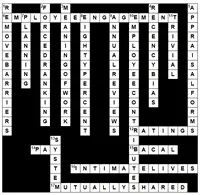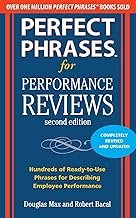So What’s the Point of Documentation?
Since there’s no such thing as a perfect form or a perfect way of
documenting performance, and since most methods and forms
are severely flawed, you might be wondering why the documentation
process is done at all. Why complete flawed forms? If the
important part of the review is communication between manager
and employee, maybe we could just ditch the forms.
In a simple and ideal world, maybe that would be best.
Unfortunately, we don’t live in that simple world and there are some good reasons why you are asked to complete forms to document performance.
Compelling Reason—Legal Issues
Over the last decades more and more employees have been taking employers to court over employment issues. Sometimes those lawsuits are justified; sometimes they’re not. But one thing is sure: you want to protect yourself and your company from unwarranted or malicious lawsuits that have no basis in fact.
There are several areas of concern here.
The first is the possibility that an employee will claim he or she has been punished and/or fired unlawfully or without reason. Laws on this issue vary from state to state and country to country. It may be you work in a location where the employer has the right to terminate employment for any reason or for no reason at all.
If it’s the latter, then there’s really no threat on this point. However, if the law requires a solid reason, there’s definitely a danger.
The second area of concern, perhaps more relevant to those of us in North America, is that an employee can claim that he or she has been punished, fired, or denied a promotion based on some illegal criterion. A person who is classified as part of a protected class might claim that being fired was a result of whatever factor entitles him or her to special protection. These claims fall under equal opportunity laws, which of course also vary from location to location. In the United States though, equal opportunity laws are federal, so if you are in the U.S. these laws apply to you, and your employees can file complaints under those laws.
In addition, your state may have laws that provide further protection of employees.
So where does the documentation fit? If a complaint is filed that alleges some form of discrimination, you will need to show that the decision (promotion, demotion, firing) was made on the basis of legitimate performance issues. To do that, there must be some form of paper trail or documentation of performance difficulties, which shows three things:
- There have been problems.
- Those problems have been communicated to the employee.
- The employee has had a chance to address those problems.
In the absence of proper documentation, the court or legal
authority is likely to determine that the decision had some illegal
basis. In other words, once a complaint is filed, it is your
company’s responsibility to demonstrate it is false. The documentation
is your offer of proof.
So, if you are wondering why human resources departments
are so insistent on the completion of all of the relevant forms
and other documentation, that’s probably the explanation.
A Signature Worth Its Weight
It’s not enough to have documentation
in the event of a discrimination
lawsuit.You must demonstrate
that the employee has received notice
of any performance problems prior to
dismissal. It’s standard procedure for
any documentation to be dated and
signed by both parties.The signatures
constitute an acknowledgment that the
information has been shared,not necessarily
an agreement on the content.
Other Reasons To Document Performance
Managers and organizations regularly make decisions about personnel.
Here are a few questions that crop up regularly, almost every day:
• Who gets a raise?
• Who is to be laid off
in tough times?
• Who needs to be
moved to another job?
• Who is to be terminated due to poor performance?
• Who has potential and would benefit from development
opportunities and training?
Apart from the legal issues mentioned earlier, it is in the interest of the company and the managers to make the best possible decisions. When times are tough, you want to lay off the least capable performers and not the best. You don’t want to lose your best performers because you failed to recognize their contributions. You don’t want to promote an employee who might have demonstrated performance problems three or four years ago. In other words you want to make the best decisions because when you make poor ones, you and the company suffer—and poor decisions reflect on your ability and your performance. These decisions need to be made on some basis, on some data, if you prefer that term. You don’t lay off specific people because you are in a bad mood or they happen to have annoyed you yesterday. You lay off people based on their records. It’s the same for good performance. You promote, recognize, reward, and raise pay based on records.
Documentation is a means to track performance over time, so that data can be used to make decisions in the future. Even if that documentation is flawed, it’s probably better than nothing.
So, in that sense it’s important.




